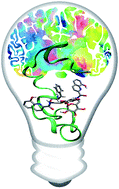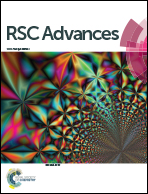Trehalose-8-hydroxyquinoline conjugates as antioxidant modulators of Aβ aggregation†
Abstract
Trehalose has been proven to provide protection to different proteins to various extents, inhibiting at elevated concentrations the aggregation of proteins involved in neurodegenerative disorders such Alzheimer's, Parkinson's and Huntington's diseases. Moreover, 8-hydroxyquinolines have also been found to protect against neurodegeneration in animal models. Here, we evaluated trehalose-8-hydroxyquinoline conjugates as antioxidants and inhibitors of self-induced Aβ aggregation. All trehalose derivatives demonstrate a significant in vitro antioxidant capacity and antiaggregant ability. The conjugation of trehalose with 8-hydroxyquinoline induces synergistic effects that lead to superior antiaggregant properties. In particular, 6,6′-difunctionalized trehalose is more effective than the corresponding 6-monofunctionalized compound suggesting that grafting two 8-hydroxyquinoline moieties on the disaccharide scaffold produces a better-performing antiaggregant compound. In silico data shed light on the binding modes of the 6-monofunctionalized and 6,6′-difunctionalized trehalose with Aβ. In particular, different to the 6-monofunctionalized compound, which mostly induces ring–ring or salt-bridge interactions also involving the glucose ring of trehalose, the 6,6′-difunctionalized derivative induces pi-stacking interactions involving 8-hydroxyquinoline moieties and the aromatic rings of F4, H14 and F20 of Aβ. The obtained results are encouraging and highlight the potential of trehalose derivatives as therapeutics for amyloid-related pathologies.


 Please wait while we load your content...
Please wait while we load your content...